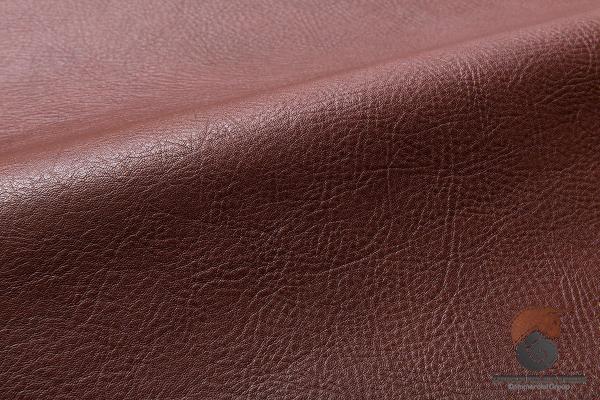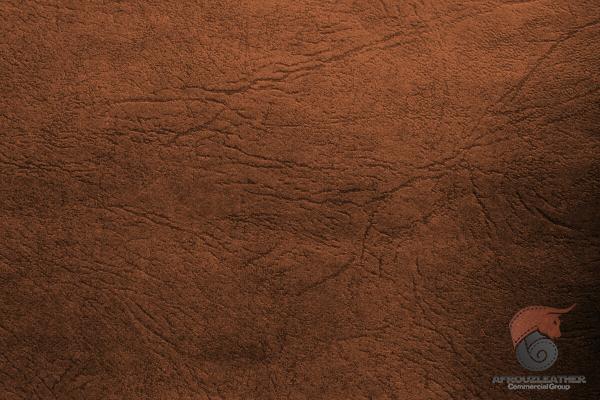In recent years, consumer demand for sustainable and cruelty-free alternatives to traditional materials has grown exponentially. In response, innovative options such as vegan leather have gained widespread popularity. Among these alternatives, raw vegan leather has emerged as a promising and environmentally friendly solution. Definition and Manufacturing Process: Raw vegan leather, also known as plant-based leather or vegetable leather, is derived from natural and renewable plant sources, avoiding the use of animal products. Rather than using animal hide, raw vegan leather is made using innovative manufacturing techniques that utilize plant fibers, such as pineapple leaves, apple waste, mushroom mycelium, or even kombucha cultures. The manufacturing process typically involves extracting the necessary plant materials, processing them to obtain cellulose or other fibrous components, and then combining these with various binding agents to create a durable and flexible material that resembles genuine leather.
leather
 Advanced techniques and technologies like biotechnology have expanded the possibilities for creating raw vegan leather, ensuring it possesses similar qualities to animal-based leather without the negative environmental impacts. Eco-Friendly Advantages: The adoption of raw vegan leather offers numerous environmental benefits when compared to traditional leather production. Here are some key advantages: 1. Animal Welfare: By eliminating the use of animal hide, raw vegan leather alleviates the ethical concerns associated with the leather industry. Animals are spared from the harsh conditions of industrial farming and slaughter. 2. Conservation of Resources: Traditional leather production consumes vast amounts of water, energy, and chemicals, contributing to pollution and climate change. In contrast, raw vegan leather can be manufactured using fewer resources, significantly reducing the industry’s carbon footprint. 3. Waste Reduction: Raw vegan leather has the potential to be created from agricultural by-products or waste materials, such as pineapple leaves or apple waste, thereby reducing landfill accumulation and promoting circularity. 4. Biodegradability: Some forms of raw vegan leather can be fully compostable and biodegradable. At the end of its life cycle, it naturally decomposes without leaving harmful residues or contributing to plastic waste.
Advanced techniques and technologies like biotechnology have expanded the possibilities for creating raw vegan leather, ensuring it possesses similar qualities to animal-based leather without the negative environmental impacts. Eco-Friendly Advantages: The adoption of raw vegan leather offers numerous environmental benefits when compared to traditional leather production. Here are some key advantages: 1. Animal Welfare: By eliminating the use of animal hide, raw vegan leather alleviates the ethical concerns associated with the leather industry. Animals are spared from the harsh conditions of industrial farming and slaughter. 2. Conservation of Resources: Traditional leather production consumes vast amounts of water, energy, and chemicals, contributing to pollution and climate change. In contrast, raw vegan leather can be manufactured using fewer resources, significantly reducing the industry’s carbon footprint. 3. Waste Reduction: Raw vegan leather has the potential to be created from agricultural by-products or waste materials, such as pineapple leaves or apple waste, thereby reducing landfill accumulation and promoting circularity. 4. Biodegradability: Some forms of raw vegan leather can be fully compostable and biodegradable. At the end of its life cycle, it naturally decomposes without leaving harmful residues or contributing to plastic waste.
Specifications of leather
 Versatility and Adoption: Raw vegan leather has garnered significant attention and adoption in various industries, including fashion, accessories, automotive, and interior design. Brands and designers are increasingly embracing this innovative material as a sustainable alternative to traditional leather, aligning with the preferences of conscious consumers. Fashion designers are actively incorporating raw vegan leather into their collections, showcasing that sustainability can go hand in hand with style and luxury. From shoes and handbags to clothing items, raw vegan leather offers a versatile range of applications that can mimic the appearance and feel of genuine leather. Automakers are also exploring the use of raw vegan leather in vehicle interiors. By replacing petroleum-based and chemical-laden synthetic leather with plant-based alternatives, the automobile industry can reduce its environmental impact and offer consumers a greener option without compromising quality or aesthetics. Challenges and Future Outlook: While raw vegan leather shows significant promise, further research, development, and market adoption are crucial to overcoming challenges and maximizing its potential. Some of the current limitations include cost, scalability, and durability. Cost remains a major hurdle in the widespread adoption of raw vegan leather.
Versatility and Adoption: Raw vegan leather has garnered significant attention and adoption in various industries, including fashion, accessories, automotive, and interior design. Brands and designers are increasingly embracing this innovative material as a sustainable alternative to traditional leather, aligning with the preferences of conscious consumers. Fashion designers are actively incorporating raw vegan leather into their collections, showcasing that sustainability can go hand in hand with style and luxury. From shoes and handbags to clothing items, raw vegan leather offers a versatile range of applications that can mimic the appearance and feel of genuine leather. Automakers are also exploring the use of raw vegan leather in vehicle interiors. By replacing petroleum-based and chemical-laden synthetic leather with plant-based alternatives, the automobile industry can reduce its environmental impact and offer consumers a greener option without compromising quality or aesthetics. Challenges and Future Outlook: While raw vegan leather shows significant promise, further research, development, and market adoption are crucial to overcoming challenges and maximizing its potential. Some of the current limitations include cost, scalability, and durability. Cost remains a major hurdle in the widespread adoption of raw vegan leather.
buy leather
 Compared to conventional leather, the production of raw vegan leather requires extensive research, development, and specialized manufacturing processes, which can initially drive up costs. However, as technology advances and economies of scale are achieved, prices are likely to become more competitive. Additionally, scalability is a factor that needs to be addressed. To meet the growing demand, increased investment in research and development is necessary to ensure efficient production methods and availability of raw vegan leather on a larger scale. Durability and performance are vital aspects associated with leather-like materials. Consumers expect durability, resistance to abrasion, water resistance, and breathability from their leather alternatives. Continuous innovation in materials science and engineering can help optimize these characteristics, making raw vegan leather a more viable alternative to conventional leather. Conclusion: Raw vegan leather represents a groundbreaking advancement in the world of sustainable materials. By combining innovation, eco-consciousness, and style, this cruelty-free option offers tremendous potential across various industries. As more individuals and businesses seek sustainable alternatives, raw vegan leather is set to become a significant contributor to a more ethical and environmentally friendly future. With continued research and development, it is likely that this material will become an integral part of the fashion and design landscape, shining a light on the incredible possibilities of ethical and sustainable manufacturing.
Compared to conventional leather, the production of raw vegan leather requires extensive research, development, and specialized manufacturing processes, which can initially drive up costs. However, as technology advances and economies of scale are achieved, prices are likely to become more competitive. Additionally, scalability is a factor that needs to be addressed. To meet the growing demand, increased investment in research and development is necessary to ensure efficient production methods and availability of raw vegan leather on a larger scale. Durability and performance are vital aspects associated with leather-like materials. Consumers expect durability, resistance to abrasion, water resistance, and breathability from their leather alternatives. Continuous innovation in materials science and engineering can help optimize these characteristics, making raw vegan leather a more viable alternative to conventional leather. Conclusion: Raw vegan leather represents a groundbreaking advancement in the world of sustainable materials. By combining innovation, eco-consciousness, and style, this cruelty-free option offers tremendous potential across various industries. As more individuals and businesses seek sustainable alternatives, raw vegan leather is set to become a significant contributor to a more ethical and environmentally friendly future. With continued research and development, it is likely that this material will become an integral part of the fashion and design landscape, shining a light on the incredible possibilities of ethical and sustainable manufacturing.

Your comment submitted.